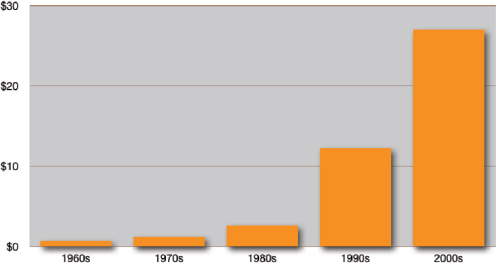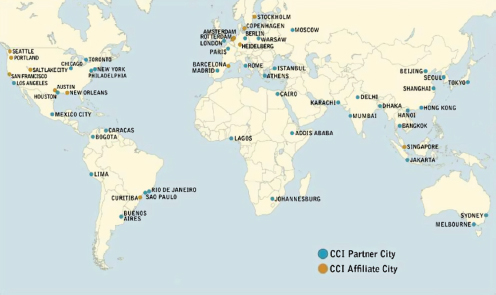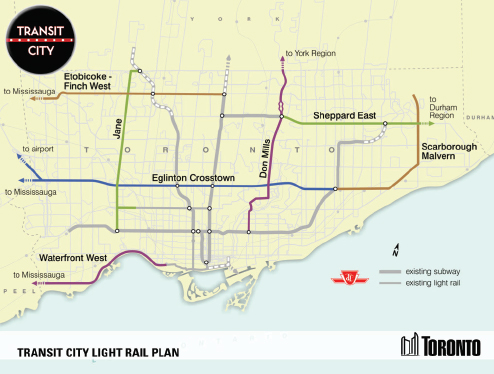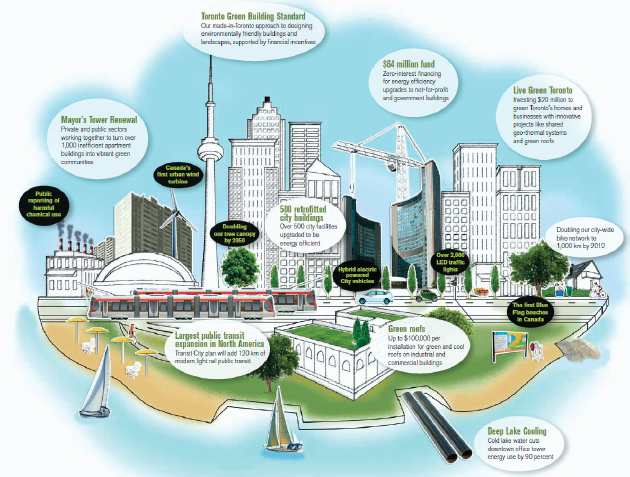We Can Fight Climate Change and Create Jobs—Here’s How
David R. Miller
Aird & Berlis LLP, Toronto; NYU Polytechnic Institute
ABSTRACT
Cities around the world are acting to both fight climate change and adapt to it. They have strategic plans, like Toronto’s Clean Air and Climate Change Action Plan, and in executing those plans are lowering carbon emissions and building new resilient infrastructures. The role of cities is critical, because as of 2008 most residents of the world lived in cities, which is where most jobs are and most carbon emissions occur. By addressing carbon emissions in three sectors—heating and cooling buildings, energy generation, and transportation—emissions can be dramatically reduced, the livability and resilience of cities improved, and new jobs created.
INTRODUCTION
Cities around the world are facing economic challenges. One of the simplest ways to put people back to work is by rebuilding the infrastructure of cities—including infrastructure that helps mitigate and adapt to climate change. Large cities are seeing the impact of climate change through increased frequency and severity of storms, sea level rise, and other natural disasters (Figure 1), and they are responding to those challenges in ways that not only address environmental challenges but also create jobs.

FIGURE 1 Rise in Global Disaster Damage, Based on Annual Insurance Disaster Claims, in Billions of US Dollars, Adjusted for Inflation, 1960s–2000s.
CITIES AROUND THE WORLD LEAD THE WAY
The C40 group of cities (Figure 2)1 are leading the fight against climate change, partnered with the Clinton Climate Initiative.
About 80 percent of greenhouse gas (GHG) emissions come from activities that take place in or are needed to support cities. Most of these emissions are from three sources: generation of energy, use of energy to heat and cool buildings, and transportation. In each of those sectors, C40 cities are taking specific actions that measurably and significantly reduce GHG emissions and create jobs. Many cities are also using the job creation from positive environmental strategies to address poverty by targeting the employment to those most in need, thus creating a green economy that is socially, economically, and environmentally sustainable.
Cities can learn from each other and act on new ideas. For example, upon learning of Sao Paulo’s success in generating energy through methane gas capture at a large landfill (Sao Paulo generates about 8 percent of its electricity from this project, reducing GHG emissions by 11 million metric tons), Toronto implemented a new methane gas capture project of its own. The city now pipes the methane to a nearby farm facility where it is used to generate
___________________
1 The C40 cities are an international network of megacities taking action to reduce greenhouse gas emissions; www.c40cities.org.

FIGURE 2 C40 Partner Cities and 18 Affiliate Cities. CCI = Clinton Climate Initiative.
electricity, which in turn is sold into the electricity grid, generating income for the city and creating good technically skilled jobs. The waste heat is used on the farm to heat industrial-scale greenhouses, which grow food. Thus Toronto’s garbage is producing energy, lowering greenhouse gases, creating jobs where they are needed, and growing food!
There are other important examples. Los Angeles is retrofitting its 140,000 streetlights with LED bulbs to lower energy consumption and within 7 years will save $10 million annually. In the city of Calgary (home of the head offices of all of Canada’s major oil companies) all municipal power, including for the city’s light rail transit, comes from wind energy. And in Copenhagen, with the help of 80 turbines, 160 megawatts of electricity was generated from offshore wind, supplying energy to 150,000 homes.
A CLOSER LOOK AT TORONTO’S STRATEGIES FOR SUSTAINABILITY
Toronto has adopted a variety of strategies to enhance energy generation, buildings, and transportation, dramatically lower greenhouse gases, and create an economically and socially sustainable community (Figure 3).
The first step is a plan with specific targets and timetables. The city’s 2007 Climate Change Action Plan, “Change Is in the Air” (updated in 2008 and 2009), requires it to meet the Kyoto targets for GHG emission reductions.
A Smart Grid
The city owns the local electricity utility (Toronto Hydro) and is working to develop a strategy to determine how to meet the city’s GHG reduction targets. The strategy is very simple in concept but will require sophisticated technical expertise to execute. It centers on demand management, conservation, and distributed energy using green sources and based on a smart grid.
The grid in Toronto needs to be rebuilt because it is aging, and this construction will be a very expensive undertaking to be paid for by the rate base. The compelling benefit is that it provides a once-in-a-lifetime opportunity to transition to a smart grid. Additionally, the private sector is displaying a remarkable entrepreneurial spirit in developing technologies to support this development. One Canadian company developed a smart grid device that helps remotely lower the amount of electricity a house uses. The device is manufactured in Toronto, sent to China to be upgraded, and then sold in Texas.
Net Zero Electricity Consumption
To demonstrate the feasibility of this kind of project, the city of Toronto developed Exhibition Place—a large, historic industrial and consumer fairground—to produce as much electricity as it consumes. To that end, Canada’s first urban wind turbine was installed as well as the largest urban rooftop solar installation, a trigenerator (which provides combined cooling, heat, and power), and a ground source geothermal heat pump. These energy generators, together with several energy efficiency measures, have enabled Exhibition Place to accomplish its goal of net zero electricity consumption.
Natural Heat Exchange
Toronto uses lake water to cool most of its downtown office buildings in the summer. The temperature of the deepest waters of Lake Ontario is the same all year round, so a heat exchange system was installed. Energy demand peaks in the summer, as is the case in many cities, when on hot days everybody is using air conditioning. Anything that can be done to lower the peak demand
translates into large financial savings for the electricity system, as the cost of building new plants to accommodate the peak demands can be eliminated.
Energy Retrofits
Toronto has aggressively invested in energy retrofits for buildings. Its Better Buildings Partnership with the private sector and the (private) gas company has resulted in energy retrofits for millions of square feet of public, private, and institutional buildings. These activities are critical because the energy used to heat and cool buildings in Toronto creates 60 percent of the city’s GHG emissions. In New York City it is 80 percent, hence the importance of measures like Mayor Bloomberg’s requirement for commercial buildings to post their energy consumption, which helps to create private market demand for energy efficiency initiatives.
Toronto has the second highest concentration of concrete slab apartment buildings in North America after New York City. These buildings offer important benefits because they often were built with larger units. Furthermore, because they are concrete, their lifespan is least 100 years and proper maintenance can add to their durability. However, concrete has no insulating power, which translates into significant energy inefficiency. Engineers from the University of Toronto developed a strategy to reskin the buildings with aluminum and insulation, dramatically reducing energy consumption at a low cost (payback over just 7–10 years). Studies show that, if all of its buildings were insulated, Toronto would reduce its GHG emissions by 5–6 percent—the first Kyoto target.
Transportation
In most cities transportation sector emissions as a percentage of total emissions are a significant concern. Toronto has responded by developing, securing funding for, and starting construction of the Transit City Light Rail (Figure 4). The plan is effective because it creates a network of rapid transit to all neighborhoods of the city, meets transportation demands now and for the future, creates opportunity for inner city development (rather than sprawl), and is cost effective, allowing for rapid construction.
Toronto is also adding capacity to its subway lines not by building new lines but by changing the cars, making it possible for them to run at shorter intervals because of technical advances in smart communication between

FIGURE 4 Toronto’s Transit City Light Rail Plan
signal systems and the subway cars—a cost-effective and simple way to add significant potential to already busy lines.
CLOSING REMARKS
Future strategies should not focus only on economic or environmental sustainability. Social sustainability must also be at the forefront of a city’s planning strategies. The city of Toronto calls it prosperity, livability, and opportunity.
Environmental strategies can provide many skilled-job opportunities. Together with trade unions, Toronto has developed strategies to help train young people in low-income neighborhoods with the skills needed to obtain jobs. Combining all these effects, the strategy will help meet important environmental goals, create jobs, and support social sustainability.
Toronto isn’t alone—city strategies from around the world, with the support of innovative engineers, can achieve the same thing on a large international scale.








